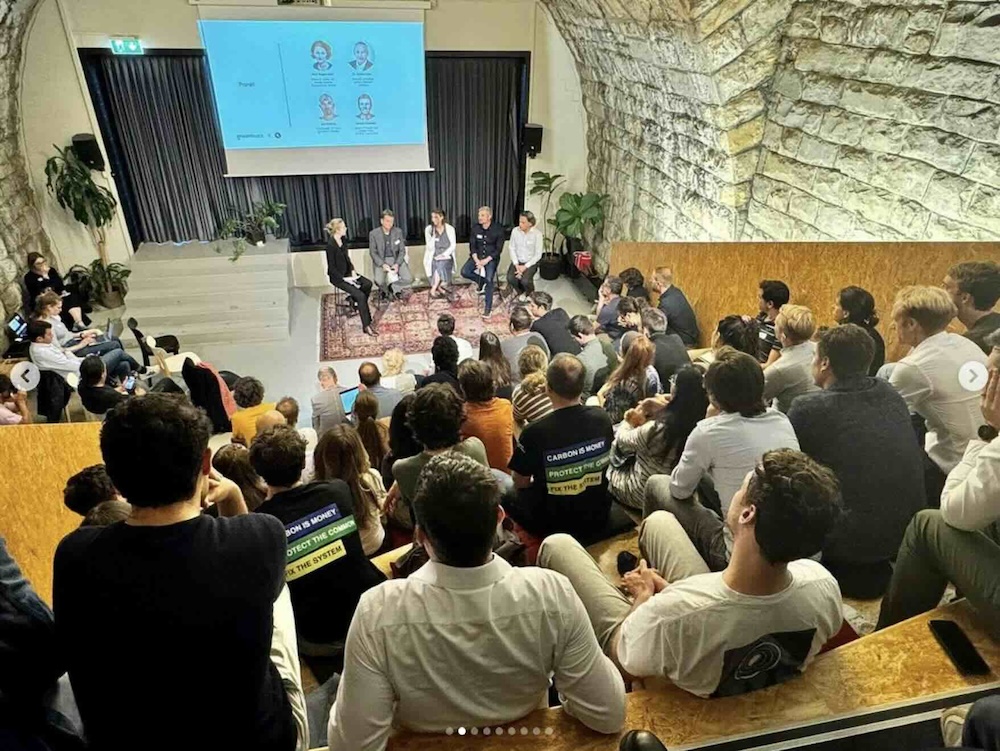
The Global Carbon Reward is a system-changing policy for funding climate mitigation together with healthy ecosystems, vibrant communities, and reliable clean energy.
Quote
Listen (2 Minutes)
Policy Summary
What is it?
● The Global Carbon Reward (GCR) is a climate policy designed to accelerate global mitigation efforts and safeguard communities and ecosystems.
● It includes a new funding mechanism, backed by central banks, that will provide debt-free finance for qualifying mitigation projects.
● It includes a new theory for reallocating capital and improving cooperation at all levels, including within markets and between nations.
Key Features
● The Global Carbon Reward (GCR) will finance emissions reductions and atmospheric carbon removal that is sufficient for systemic safety.
● It goes beyond emissions reductions, aiming to create positive outcomes for communities and ecosystems.
● It will introduce a tradable carbon asset (XCC) that will be used to mobilise over US $3 trillion per year for successful mitigation outcomes.
● It will not impose direct costs on businesses or individuals, and participation will be voluntary.
Why is it a Good Policy?
● The Global Carbon Reward (GCR) will foster broad stakeholder engagement because it is offering a financial “carrot”.
● It contributes to financial system stability, and helps reduce debt levels particularly in low-income countries.
● It will require low-carbon projects to meet technical standards and achieve science-based targets over the long-term.
● It will avoid the practice of carbon offsetting, and it will reduce the occurrence of corporate greenwashing.
What is the Funding Mechanism?
● The Global Carbon Reward (GCR) will establish a unique funding mechanism, called mitigate-and-trade. Unlike cap-and-trade, which trades emissions permits, mitigate-and-trade will trade the carbon currency (XCC).
● The XCC will be offered to qualifying projects for their greenhouse mitigation outcomes.
● Demand for the XCC will be initiated by central banks, as they will establish a suitable price floor for the XCC via open market trading.
● The open trading of the XCC by market actors will result in the reallocation of financial capital on a global scale.
Updated 9 October 2024
Listen (3 minutes)
Introduction
❝ I believe we need a new theory on carbon pricing to resolve the climate crisis. ❞
— Dr. Delton Chen (Founder)
Dirty Growth
Balanced Growth in Carbon
Balanced growth in carbon is a major new development pathway that we believe is superior to other development pathways, such as ‘green growth’ and ‘degrowth’. The new development pathway is based on managing the world economy as if it were comprised of two major sectors: (1) a carbon emitting sector, and (2) a carbon mitigating sector.
The new development pathway will reallocate finite resources between the two sectors for the purpose of achieving a relatively safe carbon balance. This will involve a tradeoff between the following two objectives:
● the carbon emitting sector will aim for socially efficient production and consumption, and
● the carbon mitigating sector will aim for a safe and regenerative carbon balance.
The above approach is supported by a new market theory, called ‘carrot and stick carbon pricing’, and a moral compass based on ‘preventative insurance’.
Updated 24 May 2024
Note that ‘optimal growth’ has been replaced with ‘balanced growth in carbon’ for reasons of clarity.
‘Carrot and Stick’ Carbon Pricing
The main focus of this website is a new type of monetary finance, called a ‘Global Carbon Reward’. The carbon reward will be a global ‘carrot’ for incentivising and funding climate mitigation and co-benefits.
The purpose of the carbon reward is to improve carbon safety using three key strategies:
● funding sufficient greenhouse gas removal, and on a global scale
● financing sufficient conventional climate mitigation, including new clean energy infrastructure
● incentivising the regeneration of natural, social and built capital.
The economic policy for the carbon reward has four key features:
● a global price for mitigated carbon
● no direct costs
● no carbon offsetting and no carbon trading in the policy
● stakeholder representation.
This website introduces the Global Carbon Reward project, including the policy and new theory on carbon pricing.
Updated 30 May 2024
Interview
 WSJ: Could a Carbon Coin Save the Planet?
WSJ: Could a Carbon Coin Save the Planet?Could a ‘Carbon Coin’ Save the Planet?
Scott Patterson at the WSJ takes a look at why a carbon currency (aka “carbon coin”) could transform the economy. He talks with Australian civil engineer Delton Chen, to review the carbon currency that is portrayed in Kim Stanley Robinson’s climate-catastrophe novel.
Join the Conversation
We are excited to announce our first major policy paper. It is set to be released in April 2025 as a pre-print. This paper will explain a new market theory and the carbon reward policy. We invite you to register on Substack, where you can join a public conversation and share your thoughts.
Feature Presentation
ZURICH GREENBUZZ
At this one-of-a-kind event, we explore the intersection of blockchain, currency, and carbon and discuss the feasibility of greening economics.
Feature Podcast
KIM STANLEY ROBINSON
KATE RAWORTH
DELTON CHEN
Will fighting climate change require restructuring the global economy? Is a “carbon currency” the most intuitive or efficient solution to the climate crisis? Casey Pickett chats with Kim Stanley Robinson, Kate Raworth (Doughnut Economics), and Delton Chen. The Ministry for the Future By Kim Stanley Robinson Cover Book
The Ministry for the Future By Kim Stanley Robinson Cover BookGetting Started
Assessment & Demonstration
This will involve:
● Policy Assessment: We’ll evaluate the policy’s economic impact using advanced analytics and computer models, considering both monetary and physical constraints. Subject matter experts will provide feasibility assessments, and stakeholder surveys will gauge the policy’s ethical and moral implications.
● Policy Demonstration: We’ll engage industry leaders through interviews and role-playing exercises using a “policy playbook” and “simulated agreements” to explore public-private partnerships. Additionally, we’ll examine how the policy influences investment decisions. The culmination of this phase will be a video compilation of stakeholder interviews, offering diverse perspectives on the policy.
This groundwork will be followed by an invitation to countries to establish a policy pilot using a digital carbon currency. This pilot will focus on the early retirement of an oil, gas, or coal lease using a limited amount of carbon currency. The learnings from this pilot will provide valuable insights for the general public and the parties to the Paris Agreement.
Footnote: the trading of the carbon currency will not involve any carbon offsetting and this is because the carbon currency does not convey the ownership of mitigated carbon. The carbon currency only acts as a store of value. Information on the pricing theory and the system of governance can be found via the links in the main menu.
Updated 3 June 2024
Carbon Rewards
Reward Weightings


XR Interview
March 7th, 2024



















